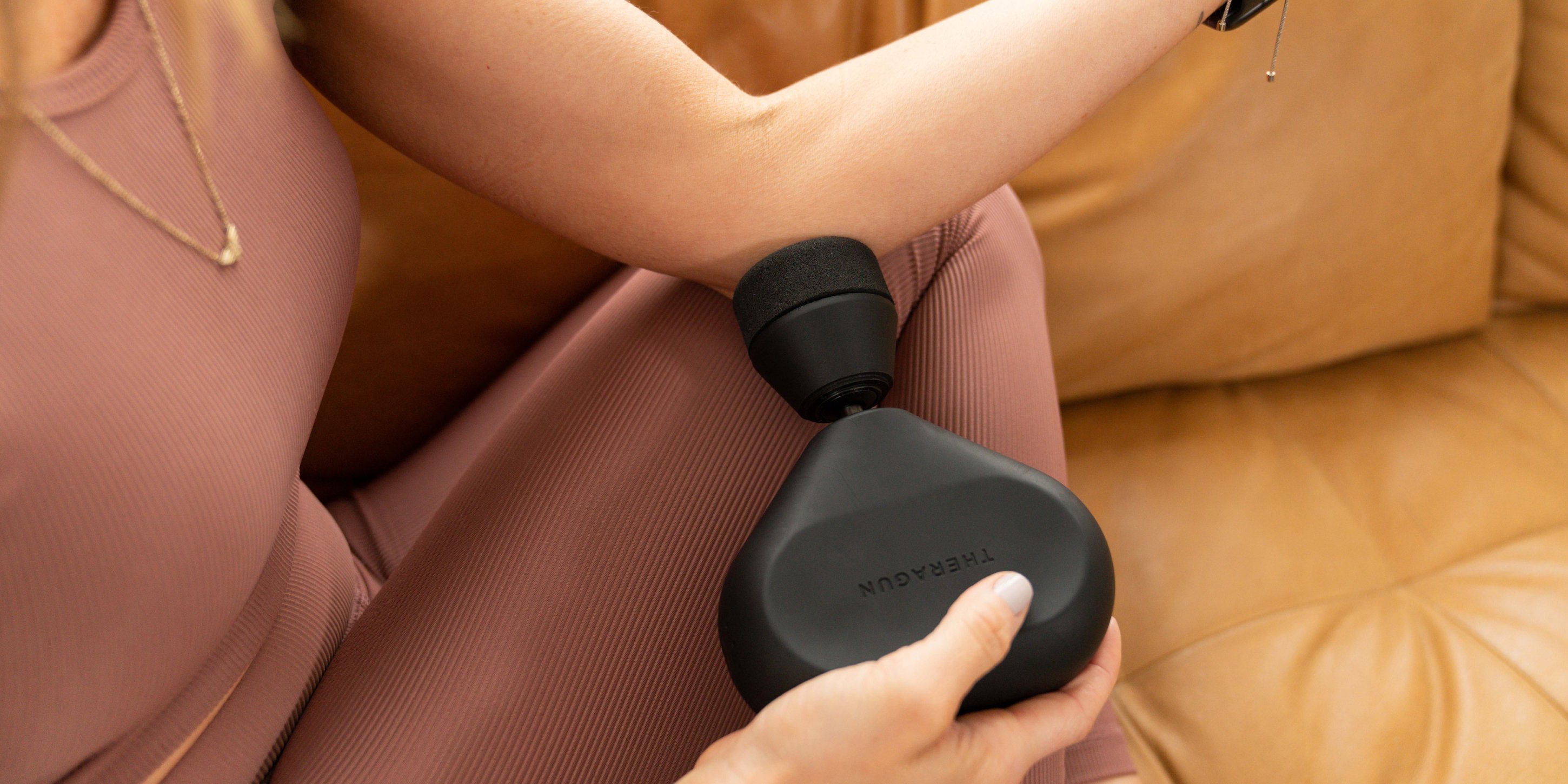“Wellness is a verb, not a noun. If you’re not doing things to be well, your body isn’t going to be as prepared for the challenges you run into."
– Dr. Jason Wersland, Therabody’s Chief Wellness Officer
We’re often told that the key to managing stress is to exercise, meditate, get a good night’s sleep… the list goes on. But it’s important to remember that, just like wellness, there isn’t a one-size-fits-all approach to stress. Calming the mind starts with tuning into your body – asking yourself what your needs are to find the solution that’s best for you.
As Dr. Jason Wersland shared with us recently, if you check in with yourself, you’ll start to know what your body needs. Here are a few other things we learned when we sat down with him to have an honest conversation about stress.
It seems like almost every day there’s another story about how to manage stress. How do you cut through all that self-care clutter?
A lot of people will say, drink this, do that, exercise five times a week. But it all starts with you. Until you pause and begin to ask yourself what your needs are, all of these suggestions may be unnecessary, ineffective, or act as a band-aid—potentially distracting you from tuning in to what you need most.
How has your personal philosophy around wellness helped you better manage your own stress?
What I’ve learned is that when your body is well, it’s better equipped to endure life’s unexpected stresses. If you’re not well, it’s harder for your body to perform at high speeds. Prevention is wellness – you’re building up your body to do the things you want to do in life.
For me, wellness is a verb, not a noun. If you’re not doing things to be well – whether that’s reading, meditating, eating right, exercising – your body isn’t going to be as prepared as it could be for the challenges you run into.
For many people, starting their wellness journey is the most overwhelming part. Do you have any advice for how to begin?
Take 2 minutes twice a day and connect with yourself – that’s a fundamental thing to being healthy.
My secret tip: every day, wake up 30 minutes earlier than you normally would and write out your wellness intentions. For me, intention is everything – if we’re not first clear with ourselves about what we want, we won’t be able to find the solutions that are best for us.
What can you tell us about stress and how it relates to the body?
Your body has adaptive ways to hide stress in certain areas and that’s why percussive therapy is so powerful. It’s a way for you to communicate with your body and take a moment to find the spots that you might not have known are holding tension. The shoulders and neck are common areas where we store tension, but it can hide in unexpected places, too, like the hip flexors, and shins.
An easy way to find out if you’re subconsciously holding tension is doing a full-body scan with your Theragun. Spend 2 minutes twice a day starting with your feet, and work your way up one side of your body. Then, flip around to the other side, stopping on any areas where you notice pain. Just by taking that time on your body, you’re bound to find some unexpected centers of stress.

“An easy way to find out if you’re subconsciously holding tension is doing a full-body scan with your Theragun. Just by taking that time on your body, you’re bound to find some unexpected centers of stress."
Are there any Theragun protocols you use to help you relieve stress?
When you have a stressful experience, your sympathetic nervous symptom kicks in, triggering your fight-or-flight reaction and a cascade of cortisol — making things seem very, very real. Conversely, your parasympathetic nervous system is what helps the body relax.
I like to use my Theragun on my left and right traps for 1 minute each, then around my chest for 30 seconds with the Supersoft attachment while taking big breaths in. The nerves that regulate the sympathetic and parasympathetic systems extend from your spinal cord, so by targeting these areas, you’re speaking to both systems, turning off your sympathetic and turning on your parasympathetic which will help calm you down.
You mentioned taking breaths in. How is breathing related to stress?
Think about when babies cry – they inhale frequently. They’re not intentionally doing that – it’s just what the body does to try to calm down. Because when you inhale, you’re opening up the alveoli – the small air sacs in your lungs – allowing more oxygen to get in and reach the brain.
Instead of taking one deep breath in, which only targets the chest, I like to take two quick double breaths in through my nostrils in rapid sequence, then a slow exhale through my mouth. This allows for a fuller, deeper breath.
Even better, do this while you’re walking. Walking is such a simple and powerful thing you can do to help manage stress. By moving your body, you’re not only triggering endorphins – our body’s natural happiness chemical – but also giving your mind the perception that you’re moving forward, metaphorically leaving your problems behind and walking through your issues.
I like to do my double breathing exercise for 2 minutes a day, twice a day, even if I’m not feeling stressed.
It’s interesting that you do your breathwork every day, even if you don’t feel stressed. Why is that?
For me, it’s the compound factor of doing it over and over again. Getting results takes consistency and persistence. The more I do it, the easier it is for me to connect with myself at the times when I really need to – like when I’m feeling stressed.
I think it’s important to remember that success in anything may not happen the first time. When I say wellness is a verb, I’m talking about building positive habits through consistency — investing time in yourself so you can tune into your body quicker and start getting the answers you need to help manage your stress better.

Pro Tips
Whether you’re targeting tension or taking a moment to pause amidst a hectic day, these routines are a simple way to help you feel balanced, more connected to your body, and with time, a little less stressed.
Dr. Jason’s Theragun Stress Protocol
Sweep your Theragun for 1 minute on your left trap, followed by 1 minute on your right trap, then 30 seconds along your chest with the Supersoft attachment. Repeat twice a day.
Dr. Jason’s Double Breathing Exercise
In a seated position, get comfortable and place your hands on your knees. Close your eyes and take two breaths in rapid sequence through your nose, hold for 2 seconds, then exhale through your mouth. Repeat five times, twice a day.







